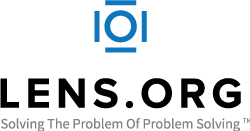Supratentorial Meningioma and Prognostic Factors Influencing Recurrence After Surgical Resection: A Comprehensive Review
DOI:
https://doi.org/10.63666/ejsmr.1694-9013.1.I.2025.22Keywords:
Supratentorial meningioma, recurrence, prognostic factors, surgical resectionAbstract
Meningiomas constitute the most common primary intracranial neoplasms, with supratentorial meningiomas—originating in the convexity, parasagittal, and falcine regions—representing the predominant subtype. Although frequently benign (WHO grade I), these tumors exhibit recurrence rates of 10–50% following surgical resection, driven by diverse prognostic factors. This systematic review synthesizes evidence from meta-analyses published between 2015 and 2024 to elucidate determinants of recurrence and survival in supratentorial meningiomas post-resection. Key factors evaluated include extent of resection (EOR), World Health Organization (WHO) histopathological grade, tumor size, sex, adjuvant radiotherapy, and emerging molecular markers such as Ki-67 and FOXM1. Gross total resection (GTR) consistently mitigates recurrence risk, with hazard ratios (HR) ranging from 0.22 to 0.45 across studies, while subtotal resection (STR) and higher WHO grades (II and III) significantly elevate recurrence, with HRs up to 2.40 for grade II. Larger tumors (>4.5 cm) impair outcomes, though effects vary by location, and sex-based differences remain inconsistent, with female sex linked to worse recurrence-free survival (RFS) in some cohorts (86.1% vs. 100%, p = 0.047). Adjuvant radiotherapy demonstrates efficacy post-STR (HR = 0.55–0.61) but not universally across grades. Molecular profiling, including proliferative signatures (e.g., FOXM1, HR = 1.90), heralds a precision medicine approach. Variability in radiotherapy protocols and sex effects highlights the need for standardized guidelines. This review delineates the multifactorial etiology of recurrence, advocating for integrated, patient-specific strategies to optimize long-term outcomes.
References
1. Gousias, K., Schramm, J., & Simon, M. (2016). Meningioma recurrence rates following treatment: A systematic analysis. Journal of Neuro-Oncology, 129(3), 351–361. https://doi.org/10.1007/s11060-016-2180-3
2. Gagliardi, F., De Domenico, P., Snider, S., Pompeo, E., Roncelli, F., Barzaghi, L. R., Acerno, S., & Mortini, P. (2023). Efficacy of radiotherapy and stereotactic radiosurgery as adjuvant or salvage treatment in atypical and anaplastic (WHO grade II and III) meningiomas: A systematic review and meta-analysis. Neurosurgical Review, 46(1), 71. https://doi.org/10.1007/s10143-023-01969-7
3. Chen, J., Liu, X., & Zhang, Y. (2023). Machine learning for predicting post-operative outcomes in meningiomas: A systematic review and meta-analysis. Acta Neurochirurgica, 165(12), 1–15. https://doi.org/10.1007/s00701-023-05812-3
4. Bergner, A., Maier, A. D., Mirian, C., & Mathiesen, T. I. (2022). Adjuvant radiotherapy and stereotactic radiosurgery in grade 3 meningiomas - a systematic review and meta-analysis. Neurosurgical Review, 45(4), 2639–2658. https://doi.org/10.1007/s10143-022-01773-9
5. Simpson, D. (1957). The recurrence of intracranial meningiomas after surgical treatment. Journal of Neurology, Neurosurgery, and Psychiatry, 20(1), 22–39. https://doi.org/10.1136/jnnp.20.1.22
6. Zhu, H., Bi, W. L., & Dunn, I. F. (2019). Adjuvant radiotherapy in WHO grade II meningiomas: A meta-analysis. World Neurosurgery, 128, e543–e550. https://doi.org/10.1016/j.wneu.2019.04.215
7. Choudhury, A., Magill, S. T., & McDermott, M. W. (2022). Biomarkers for prognosis of meningioma patients: A systematic review and meta-analysis. PLoS One, 17(8), e0271574. https://doi.org/10.1371/journal.pone.0271574
8. Driver, J., Hoffman, S. E., & Dunn, I. F. (2024). Molecular classification to refine surgical and radiotherapeutic decision-making in meningioma. Nature Medicine, 30(8), 2150–2160. https://doi.org/10.1038/s41591-024-02912-5
9. Louis, D. N., Perry, A., & Wesseling, P. (2021). The 2021 WHO classification of tumors of the central nervous system: A summary. Neuro-Oncology, 23(8), 1231–1251. https://doi.org/10.1093/neuonc/noab106
10. Ostrom, Q. T., Cioffi, G., & Barnholtz-Sloan, J. S. (2021). CBTRUS statistical report: Primary brain and other central nervous system tumors diagnosed in the United States in 2014–2018. Neuro-Oncology, 23(Suppl 3), iii1–iii105. https://doi.org/10.1093/neuonc/noab200
11. Al-Mefty, O. (1990). Operative atlas of meningiomas. Neurosurgery, 27(6), 1031–1032. https://doi.org/10.1097/00006123-199012000-00031
12. Cahill, D. W., & Bashirelahi, N. (1999). Progesterone receptors in meningiomas: A review. Neurosurgery, 45(5), 1156–1162. https://doi.org/10.1097/00006123-199911000-00038
13. Preusser, M., de Ribaupierre, S., & Wöhrer, A. (2018). Radiotherapy in meningiomas: Current concepts and future perspectives. Neuro-Oncology, 20(6), 723–734. https://doi.org/10.1093/neuonc/noy013
14. Sahm, F., Schrimpf, D., & Stichel, D. (2017). DNA methylation-based classification of meningiomas. Nature, 553(7686), 89–93. https://doi.org/10.1038/nature25467
15. Nanda, A., Bir, S. C., & Konar, S. (2016). Outcome of resection of WHO Grade II meningioma and correlation of pathological and radiological predictive factors for recurrence. Clinical Neurology and Neurosurgery, 142, 31–37. https://doi.org/10.1016/j.clineuro.2016.01.005
Downloads
Published
Issue
Section
License
Copyright (c) 2025 Eurasian Journal of Scientific and Multidisciplinary Research

This work is licensed under a Creative Commons Attribution-NonCommercial-NoDerivatives 4.0 International License.












